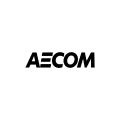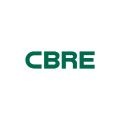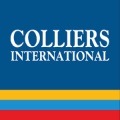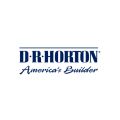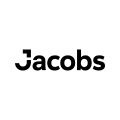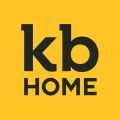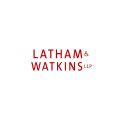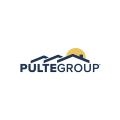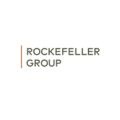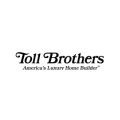Index
Applications & Benefits of GAO’s RFID, BLE, IoT & Drones for Land Subdivision Industry
GAO Helps Customers Comply with Standards, Mandates & Regulations of Land Subdivision Industry
GAO Software Provides Easy Integration with API
Case Studies of RFID, IoT & Drones Applications
GAO RFID Systems & Hardware for Land Subdivision Industry
Overview
The land subdivision industry involves the process of dividing larger plots of land into smaller parcels or lots. This practice plays a crucial role in urban and rural development by transforming large tracts of land into smaller units that can be more efficiently utilized for various purposes, such as residential, commercial, industrial, or agricultural use.
GAO’s RFID, BLE, IoT, and drone technologies have helped its customers in the Land subdivision Industry to improve their work processes, operations, and productivity by better management of their staff, materials, and operational equipment such as RFID, BLE, IoT sensors, and drones.
Ranked as one of the top 10 global RFID suppliers, GAO RFID Inc. is based in New York City, U.S. and Toronto, Canada. GAO offers a comprehensive selection of UHF, HF (including NFC) and LF RFID (radio frequency identification) readers and tags, BLE (Low Energy Bluetooth) gateways and beacons, and various RFID and BLE systems such as people tracking, asset tracking, access control, parking control, fleet management, WIP (work in progress), traceability. Such RFID and BLE products and systems, as well as its IoT and drone technologies, have been successfully deployed for Land subdivision Industry. Its sister company, GAO Tek Inc. https://gaotek.com, is a leading supplier of industrial or commercial testers and analyzers, drones, and network products.
The targeted markets of both GAO RFID Inc. and GAO Tek Inc. are North America, particularly the U.S., Canada, Mexico, and Europe. As a result, this website gaorfid.com is offered in English and other major languages of North America and Europe such as Spanish, French, German, Italian, Polish, Ukrainian, Romanian, Russian, Dutch, Turkish, Greek, Hungarian, Swedish, Czech, Portuguese, Serbian, Bulgarian, Croatian, Danish, Finnish, Norwegian, Slovak, Catalan, Lithuanian, Bosnian, Galician, Slovene, Latvian, Estonian, Welsh, Icelandic, and Irish.
Applications & Benefits of GAO’s RFID, BLE, IoT & Drones for Land Subdivision Industry
To satisfy its customers, GAO’s RFID or RFID Systems for Land subdivision Industry are offered in 2 versions. One version is that its software is running on a local server that normally is on our client’s premise, and another version runs in the cloud. The cloud server could be GAO’s cloud server, client’s own cloud server or a cloud server from one of the leading cloud server providers such as Amazon Web Services (AWS), Microsoft Azure, Google Cloud, IBM Cloud (formerly SoftLayer), Oracle Cloud, RedHat, Heroku, Digital Ocean, CloudFlare, Linode and Rackspace. The above illustrates GAO system for Land subdivision Industry with its software running on a local server.
The above illustrates GAO system Land subdivision Industry with its software running in cloud.
GAO’s RFID and BLE technologies, consisting of RFID readers, RFID tags, BLE gateways, BLE beacons, software, cloud services and their systems, have the following applications in Land subdivision Industry:
- Site Access Management: GAO’s RFID systems enable secure and efficient access control for construction sites by using RFID tags embedded in worker badges or equipment. This ensures that only authorized personnel and equipment can access specific areas.
- Material Tracking: GAO RFID solutions facilitate accurate inventory management by tracking materials and supplies using RFID tags. This optimizes stock levels, reduces losses, and streamlines the procurement process.
- Equipment Monitoring: Our RFID technology helps monitor the location and usage of operational equipment such as bulldozers, cranes, and trucks. This enhances equipment utilization and minimizes downtime.
- Workforce Tracking: GAO’s RFID readers and tags track worker movement within the site, providing real-time visibility into labor allocation, attendance, and productivity.
- Tool Management: Our RFID systems enhance tool management by attaching RFID tags to tools and equipment. This aids in tool identification, reduces loss, and ensures that the right tools are available when needed.
- Safety Compliance: GAO RFID assists in ensuring worker safety by using RFID-enabled personal protective equipment (PPE) tags. These tags can trigger alarms or alerts if workers enter restricted zones without proper gear.
- Workflow Automation: Our RFID solutions automate processes such as check-in/check-out of equipment and materials, reducing manual paperwork and administrative tasks.
- Asset Maintenance: GAO’s RFID technology enables scheduled maintenance of equipment and machinery by monitoring usage patterns and sending alerts when maintenance is due.
- Security Enhancements: RFID-based access control systems enhance security by allowing only authorized personnel to enter certain areas of the construction site.
- Inventory Management: Our RFID systems track inventory levels in real time, reducing overstocking or stockouts of construction materials.
GAO’s drone technologies find the following applications in the Land subdivision Industry:
- Site Survey and Mapping: GAO’s drone technology performs aerial surveys and creates accurate topographic maps of construction sites, helping in the planning and design of residential subdivisions.
- Progress Monitoring: GAO’s drones capture regular aerial images of construction sites, providing stakeholders with visual updates on project progress. This aids in project management and reporting.
- Site Inspections: Our drone technology conducts routine inspections of construction sites, identifying potential issues such as structural concerns, safety hazards, and compliance with regulations.
- Environmental Monitoring: GAO drones monitor environmental impacts by capturing data on vegetation, erosion, water bodies, and other natural features within the land subdivision area.
- Infrastructure Planning: Our drones gather high-resolution imagery and data for infrastructure planning, including road layouts, utility placement, and drainage systems.
- 3D Modeling: GAO’s drone technology creates detailed 3D models of construction sites, assisting in visualizing how the residential subdivision will fit into the landscape.
- Marketing and Presentation: Drones capture stunning aerial visuals that can be used for marketing purposes, showcasing the progress and potential of the land subdivision to potential buyers.
- Security Surveillance: GAO’s drones provide real-time surveillance of construction sites, enhancing security by monitoring access points and detecting any unauthorized activities.
- Terrain Analysis: Our drone technology performs detailed terrain analysis, helping engineers and planners understand the landscape and make informed decisions.
- Conflict Resolution: Drones capture accurate visual data that can be used to resolve disputes related to land boundaries, site conditions, and construction quality.
GAO’s IoT technologies, consisting of IoT sensors, sensors networks and systems, find the following applications in the Land subdivision Industry:
- Environmental Monitoring: GAO’s IoT sensors monitor air quality, noise levels, and other environmental factors in the Land subdivision Industry to ensure compliance with regulations and create healthier living environments for residents.
- Utility Management: Our IoT systems track water, electricity, and gas consumption in residential subdivisions, enabling efficient resource management and cost savings.
- Infrastructure Health Monitoring: GAO’s IoT sensors monitor the structural health of buildings, roads, and bridges within the land subdivision to detect any signs of deterioration or maintenance needs.
- Smart Lighting: Our IoT technology facilitates smart lighting systems that adjust illumination based on natural light levels, enhancing energy efficiency and safety.
- Waste Management: GAO’s IoT sensors optimize waste collection by monitoring bin fill levels, ensuring timely pickups, and reducing unnecessary trips.
- Security and Surveillance: Our IoT networks enable real-time security surveillance by integrating cameras, motion sensors, and access control systems, ensuring the safety of the land subdivision.
- Energy Efficiency: GAO’s IoT solutions manage and optimize energy consumption by monitoring appliances and HVAC systems, contributing to reduced energy costs.
- Smart Irrigation: Our IoT sensors control irrigation systems by monitoring soil moisture levels, weather conditions, and water requirements, conserving water resources.
- Parking Management: GAO’s IoT technology tracks parking space availability, guiding residents and visitors to available spots and enhancing parking management.
- Remote Monitoring: Our IoT systems provide remote monitoring capabilities for various systems within the land subdivision, allowing property managers to identify and address issues without being on-site.
GAO Helps Customers Comply with Standards, Mandates & Regulations of Land Subdivision Industry
GAO RFID Inc. has helped many companies in Land subdivision Industry to deploy RFID, BLE, IoT and drone systems and to ensure such deployments complying with the applicable industry standards, mandates and government regulations:
RFID, BLE, IoT, & Drone Standards & Mandates
- ISO 18000 series
- EPC Gen2
- ISO/IEC 14443 (NFC)
- ISO/IEC 15693
- Bluetooth SIG standards
- Bluetooth 4.0
- Bluetooth 5.0
- IEEE 802.15.4
- MQTT
- CoAP
- LoRaWAN
- ASTM F38
- ICAO Annex 2
- FAA Part 107
GAO Software Provides Easy Integration with API
GAO Software Provides Easy Integration with API GAO’s RFID and BLE software offers a free trial for both the server-based and cloud versions, and offers an API to the important systems in Land subdivision Industry such as:
Personnel Management:
- Employee Records and HR Management
- Compliance Training and Certification
- Performance Management
- Talent Acquisition
Equipment Management:
- IT Asset Management
- Office Equipment Inventory
- Physical Asset Tracking
- Maintenance and Repairs
Access Control:
- Physical Security
- Identity Verification
- Visitor Management
- Secure Data Access
Warehouse Management:
- Inventory Tracking
- Order Management
- Quality Control
Supply Chain Management:
- Supplier Management
- Logistics and Transportation
- Demand Forecasting
Other Applications:
- Compliance and Regulatory Reporting
- Data Security and Privacy
- Disaster Recovery and Business Continuity
- Document Management
- Customer Relationship Management (CRM)
- Fraud Detection and Risk Management
GAO has enabled its customers to make use of some of the leading software and cloud services in the Land subdivision Industry. Below are some of popular software and cloud services in Land subdivision Industry:
Oracle HCM Cloud, SAP SuccessFactors, Procore, and CMiC, while established cloud platforms such as Microsoft Azure and AWS offer versatile capabilities. Access control, warehouse management, and supply chain management benefit from software offerings like SAP Extended Warehouse Management and cloud services like Salesforce and Microsoft Dynamics 365. The industry’s unique needs are met through application software like AutoCAD, ArcGIS, and Revit, while cloud services such as Trimble Connect and BIM 360
GAO has worked with some of the leading technology companies in the Land subdivision Industry to provide integrated RFID, BLE, IoT and drone solutions to customers. Here are some of the technology leaders in Land subdivision Industry:
Oracle Corporation, SAP SE, Microsoft Corporation, IBM Corporation, Salesforce, Amazon Web Services (AWS), Honeywell International Inc., Siemens AG, Schneider Electric, Johnson Controls International PLC, Panasonic Corporation, Sony Corporation, Trimble Inc., Bentley Systems, Incorporated, Autodesk, Inc., Hexagon AB, Leica Geosystems AG, and Topcon Corporation.
Case Studies of RFID, IoT & Drone Applications
Case Studies of RFID Applications
Below are some RFID application cases in Land subdivision Industry.
Within the Land subdivision Industry, RFID technology has demonstrated its transformative potential through various real-world case studies. In the USA, an urban planning company harnessed RFID’s capabilities to oversee the progression of residential development projects. By affixing RFID tags to construction materials and equipment, they achieved real-time monitoring of material movement, streamlined inventory management, and precise construction scheduling. Simultaneously, a real estate development firm embraced RFID-based access control systems in gated communities across the USA. This implementation ensured seamless access for authorized personnel and residents while enforcing controlled entry to designated areas, enhancing overall security measures.
Heading north to Canada, a homebuilder turned to RFID to optimize inventory management processes. By attaching RFID tags to construction supplies and materials, the company achieved precise inventory tracking, mitigated material shortages, and streamlined procurement procedures. In a different context, a land subdivision project in Canada revolutionized waste management practices through RFID-enabled waste bins. These bins, integrated with RFID tags, intelligently triggered notifications to waste management teams when nearing capacity, leading to highly efficient waste collection routines and minimizing unnecessary pickups.
Case Studies of IoT Applications
Below are some IoT application cases in Land subdivision Industry.
The Land subdivision Industry has witnessed transformative changes through the implementation of IoT applications, enhancing various aspects of operations across different regions. In the USA, a residential subdivision embarked on a journey of smart energy management by leveraging IoT technology. This involved integrating smart meters and sensors to monitor electricity consumption in real time, enabling residents to take charge of their energy usage and contribute to both energy efficiency and cost reduction.
Moving north to Canada, IoT solutions have reshaped waste management practices within a residential community. By embedding IoT sensors within waste bins, fill levels were monitored and communicated to waste management teams. This smart approach optimized waste collection routes and schedules, leading to cost savings and improved waste disposal processes.
In the European context, the Land subdivision Industry has embraced IoT-driven innovations that prioritize convenience and sustainability. A residential area implemented IoT-enabled parking management systems, where sensors in parking spaces communicated occupancy information to a central system. This made it easier for residents and visitors to find available parking spots, reducing traffic congestion and promoting efficient parking practices.
Case Studies of Drone Applications
Below are some drone application cases in the Land subdivision Industry.
A residential subdivision project in the USA harnessed the capabilities of drones for precise site survey and mapping. By conducting aerial surveys and generating accurate topographic maps, the project team was equipped with essential data for informed land planning, design, and infrastructure development. Drones facilitated a comprehensive understanding of the landscape, optimizing project execution.
In the USA, a real estate development company integrated drones into construction progress monitoring. Aerial imagery captured by drones provided stakeholders with real-time updates on project advancement. This visual insight into construction sites aided project management, reporting, and effective communication among stakeholders, enhancing project efficiency and transparency
Drones have made a significant impact on environmental impact assessment in Canada. A land subdivision project incorporated drones to capture high-resolution imagery of the site, allowing for an in-depth analysis of environmental factors and potential risks. This data informed sustainable land development practices, ensuring that residential growth occurs harmoniously with the local environment.
In Canada, drones played a crucial role in infrastructure inspection within a residential development. The aerial perspective enabled close and detailed inspections of various components such as structures, roads, and utility systems. By identifying maintenance needs and ensuring adherence to safety standards, drones contributed to the long-term integrity of the infrastructure.
In Mexico, drones were pivotal in accurate land boundary mapping for a subdivision project. By capturing detailed aerial imagery, drones provided essential data for the precise delineation of property lines. This technological application minimized boundary disputes, promoting equitable land allocation within the development.
Drones also played a vital role in erosion control monitoring within a Mexican residential development. Aerial imagery captured by drones allowed for the efficient tracking of erosion patterns. This insight guided the implementation of necessary measures to preserve the landscape’s integrity and mitigate erosion-related challenges.
Drones emerged as powerful tools for visualizing urban planning projects in Europe. By creating aerial footage and 3D models of planned residential developments, drones offered stakeholders immersive insights into the projects. This visualization aid supported informed decision-making, effective communication, and enhanced community engagement.
GAO RFID Systems & Hardware for Land Subdivision Industry
GAO RFID Inc. offers the largest selection of BLE gateways, BLE beacons, RFID readers, tags, antenna, printers, and integrated RFID systems for various industries, including Land subdivision Industry.
BLE (Bluetooth Low Energy)
GAO offers advanced BLE gateways:
as well as versatile beacons with such important functions as temperature, humility, vibration and panic button:
GAO’s BLE technology is suitable for many industries, including residential building construction.
UHF (Ultra High Frequency) RFID
GAO offers the largest selection of UHF RFID readers for various industries, including residential building construction:
GAO RFID offers the widest choice of UHF RFID tags, labels, badges, wristbands for various industries, including residential building construction:
and an array of antennas to address different applications:
HF (High Frequency), NFC (Near Field Communications) and LF (Low Frequency) RFID
GAO offers the largest selection of HF, NFC, and LF RFID readers for various industries, including residential building construction:
HF, NFC and LF RFID tags, labels, badges, wristbands for various industries, including residential building construction:
and antennas:
GAO also offers RFID printers:
Digital I/O adapters:
and relay controllers:
For embedded applications, GAO offers UHF, HF and LF RFID reader modules:
- UHF 860 – 960 MHz RFID Modules
- 13.56 MHz High Frequency RFID Modules
- 125 kHz Low Frequency RFID Modules
In collaboration with its sister company GAO Tek Inc, a wide selection of high quality drones are offered:
The RFID systems by GAO are highly popular for clients in Land subdivision Industry:
Physical asset or operational equipment tracking system:
Assets that can be effectively tracked using GAO’s technologies include the special equipment used by the Land subdivision Industry. These assets encompass a range of essential tools and machinery that contribute to the development and management of residential projects. Some notable examples include construction vehicles, excavators, bulldozers, cranes, pavers, compactors, graders, surveying equipment, concrete mixers, and earthmoving machinery. GAO’s RFID, BLE, IoT, and drone technologies provide valuable solutions for tracking and managing these specialized assets, enhancing operational efficiency and project outcomes within the Land subdivision Industry.
People or workers tracking system:
Personnel or people access control system:
Parking or vehicle control system:
Furthermore, GAO provides the customization of RFID tags, RFID readers, BLE beacons and BLE gateways, IoT, drones, and systems and consulting services for Land subdivision Industry’s and for various industries in all metropolitans in North America, particularly the U.S., Canada and Mexico, and Europe:
GAO Makes Efforts to Satisfy Customers
Large Choice of Products
In order to satisfy the diversified needs of their corporate customers, GAO RFID Inc. and its sister company GAO Tek Inc. together offer a wide choice of RFID, BLE, IoT, drones, testing and measurement devices, and network products.
Overnight Delivery
In order to shorten the delivery to our customers, GAO has maintained a large stock of its products and is able to ship overnight within continental U.S. and Canada, and fast delivery to anywhere in Mexico and Europe from the nearest warehouse.
Local to Our Customers
We are located in both the U.S. and Canada. We travel to customers’ premises if necessary. Hence, we provide a very strong local support to our customers in North America, particularly the U.S., Canada and Mexico, and Europe. Furthermore, we have built partnerships with some integrators, consulting firms and other service providers in different cities to further strengthen our services. Here are some of the service providers in Land subdivision Industry we have worked with to serve our joint customers:
- Appian
- CGI
- Cisco Systems
- DXC Technology
- Fujitsu
- IBM
- Infosys
- HPE
- Microsoft
- Oracle
- PwC
- SAP
- Tata Consultancy Services
- Wipro
GAO Has Served Land Subdivision Industry Extensively
GAO RFID Inc. and its sister company GAO Tek Inc. together offer a wide choice of RFID, BLE, IoT, drone, testing and measurement devices, and network products.
GAO’s products and technologies have helped its customers in the Land subdivision Industry to achieve success in: Traceability, Sustainability, Cold Chain Management, Automation, Quality Assurance, transparency, Data Analytics, Remote Monitoring, IoT Integration, Process Optimization, Supply Chain Visibility, Digital Transformation, Blockchain Integration.
GAO RFID Inc. has served many customers in Land subdivision Industry, including its various divisions such as
- Mixed-Use Development: Combines residential, commercial, and sometimes industrial components within a single project.
- Master Planned Communities: Comprehensive developments with housing, amenities, and services designed to offer a self-contained lifestyle.
- Urban Redevelopment: Revitalizing existing urban areas by repurposing land for improved community use.
- Industrial Subdivision: Dividing land for industrial purposes, including manufacturing, warehousing, and distribution centers.
- Greenfield Development: Developing on previously undeveloped or agricultural land, often requiring extensive infrastructure development.
- Brownfield Development: Repurposing previously developed land, often with environmental remediation, for new projects.
- Rural Subdivision: Dividing rural land for residential, agricultural, or recreational purposes.
- Gated Communities: Privately managed communities with restricted access, offering enhanced security and amenities.
- Transit-Oriented Development: Integrating residential and commercial spaces around public transportation hubs.
- Land Banking: Acquiring and holding land for future development, often driven by strategic location and market potential.
- Community Land Trusts: Non-profit organizations holding land for affordable housing and community benefit.
- Land Parcels: Dividing land into smaller parcels for various uses, including sale or development.
GAO’s technologies enable its customers in the Land subdivision Industry to effectively track their workforces, such as project managers, architects, surveyors, engineers, construction supervisors, and laborers. Additionally, GAO’s solutions facilitate the efficient tracking of operational assets, including bulldozers, excavators, cranes, pavers, graders, loaders, compactors, and surveying equipment. This advanced tracking capability enhances operational efficiency, improves resource allocation, and contributes to the successful execution of residential and commercial development projects within the Land subdivision Industry.
Here are some of the leading companies in Land subdivision Industry GAO has served:
- R. Horton
- Lennar Corporation
- PulteGroup
- Toll Brothers
- KB Home
- Brookfield Properties
- The Howard Hughes Corporation
- Hines
- The Rockefeller Group
- Tishman Speyer
- AECOM
- Bechtel
- Fluor Corporation
- Jacobs Engineering Group
- Turner Construction Company
- Bank of America
- Goldman Sachs
- Morgan Stanley
- Wells Fargo
- Citigroup
- Akin Gump Strauss Hauer & Feld LLP
- Kirkland & Ellis LLP
- Latham & Watkins LLP
- Skadden, Arps, Slate, Meagher & Flom LLP
- Wachtell, Lipton, Rosen & Katz LLP
- CBRE Group
- Cushman & Wakefield
- Jones Lang LaSalle
- Newmark Group
- Colliers International
You Are Invited to Contact Us!
If you are interested in our products, services or partnering with us, please feel free to contact us by filling out this form:
or email us at sales@gaorfid.com




